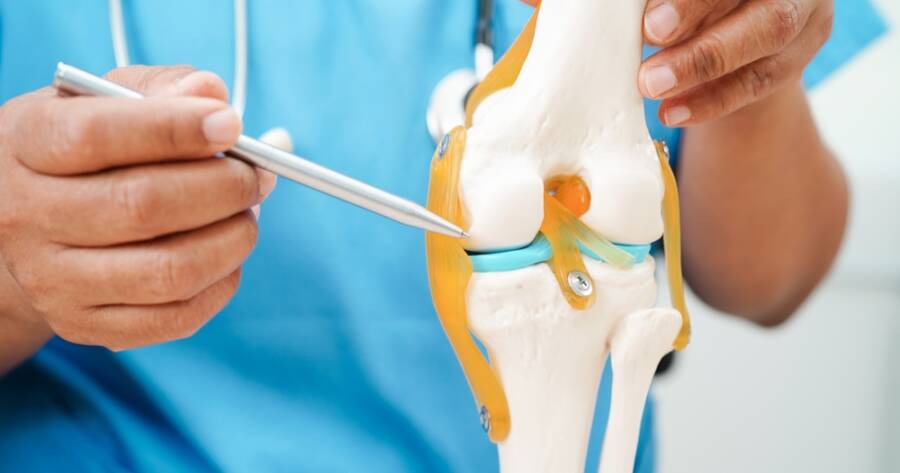Osteoarthritis (OA) is one of the most common types of arthritis, affecting millions of people worldwide. It is a chronic condition that primarily impacts the joints, leading to pain, stiffness, and decreased mobility. OA occurs when the cartilage that cushions the ends of the bones wears down over time, causing the bones to rub against each other. While it is often associated with aging, osteoarthritis can also develop as a result of joint injuries or other factors. Explore the causes, symptoms, and treatment options for osteoarthritis.
What is Osteoarthritis?
Osteoarthritis is a degenerative joint disease that most commonly affects weight-bearing joints like the knees, hips, spine, and hands. The cartilage, which normally serves as a cushion between the bones, gradually wears away. This results in increased friction, pain, and inflammation in the affected joint. As the cartilage wears down, the joint may also lose its ability to move smoothly, leading to reduced flexibility and strength.
Causes of Osteoarthritis
Osteoarthritis is primarily caused by the breakdown of cartilage in the joints. There are several factors that can contribute to the development of OA, including:
- Age: As we age, the cartilage in our joints naturally wears down. This is the most common risk factor for osteoarthritis.
- Joint Injuries: Past injuries, such as fractures or torn ligaments, can increase the risk of developing OA in the affected joint. Even old injuries that didn’t heal correctly can lead to joint damage later in life.
- Obesity: Excess weight puts additional stress on the joints, particularly weight-bearing joints like the knees and hips. This can speed up the breakdown of cartilage and increase the likelihood of developing OA.
- Genetics: Some people inherit genes that make them more susceptible to osteoarthritis. A family history of the condition may increase the risk of developing it.
- Gender: Women are more likely than men to develop osteoarthritis, particularly after menopause. This is likely due to hormonal changes that affect cartilage strength.
- Repetitive Stress: Certain occupations or activities that require repetitive joint movement can increase the risk of developing OA.
Symptoms of Osteoarthritis
The symptoms of osteoarthritis vary depending on the severity of the condition and which joints are affected. Common symptoms include:
- Pain: Joint pain is the hallmark symptom of osteoarthritis. It typically worsens with activity and improves with rest, although the pain may become constant as the disease progresses.
- Stiffness: People with osteoarthritis often experience stiffness in the affected joint, especially after long periods of inactivity, such as in the morning or after sitting for an extended time.
- Swelling: Inflammation can occur around the affected joint, leading to visible swelling and increased tenderness.
- Reduced Range of Motion: OA can limit the flexibility and movement of the affected joint, making it difficult to perform certain tasks or activities.
- Grinding Sensation: As the cartilage breaks down, the bones may rub against each other, leading to a sensation of grinding or crunching when the joint moves.
Treatment Options for Osteoarthritis
While there is no cure for osteoarthritis, several treatments can help manage symptoms, improve joint function, and slow the progression of the disease. Treatment options include:
1. Medications
- Pain Relievers: Over-the-counter medications like acetaminophen (Tylenol) or nonsteroidal anti-inflammatory drugs (NSAIDs) such as ibuprofen (Advil) can help relieve pain and reduce inflammation.
- Topical Creams: Creams containing menthol or capsaicin can be applied directly to the skin over the affected joint to provide temporary pain relief.
- Corticosteroid Injections: For more severe pain, corticosteroid injections can be administered directly into the joint to reduce inflammation and provide longer-lasting pain relief.
- Hyaluronic Acid Injections: These injections can help lubricate the joint, reducing friction and improving joint mobility.
2. Physical Therapy
Physical therapy is an essential component of osteoarthritis management. A physical therapist can design a personalized exercise program to strengthen the muscles around the affected joint, improving stability and reducing pain. Stretching exercises can also help maintain flexibility and prevent further stiffness.
3. Lifestyle Changes
- Weight Management: Maintaining a healthy weight can help reduce the pressure on weight-bearing joints like the knees and hips, which can slow the progression of osteoarthritis and alleviate symptoms.
- Exercise: Regular, low-impact exercises like walking, swimming, and cycling can help improve joint function and reduce stiffness. Exercise also strengthens the muscles around the joint, providing added support.
4. Surgical Treatments
In more severe cases of osteoarthritis, when other treatments are no longer effective, surgical options may be considered:
- Joint Replacement: In cases of advanced OA, a joint replacement (such as a knee or hip replacement) may be recommended. This procedure involves removing the damaged joint and replacing it with an artificial one.
- Arthroscopy: In some cases, minimally invasive surgery, known as arthroscopy, may be used to remove damaged tissue or clean out the joint to improve mobility and reduce pain.
Managing Osteoarthritis for Better Joint Health and Quality of Life
Osteoarthritis is a common but manageable condition. While there is no cure, there are a variety of treatment options available that can help reduce symptoms, improve joint function, and enhance quality of life. Early diagnosis and proactive management are key to slowing the progression of osteoarthritis. By combining medications, physical therapy, lifestyle changes, and, in some cases, surgical interventions, individuals with OA can continue to lead active, fulfilling lives despite the challenges posed by this condition.

